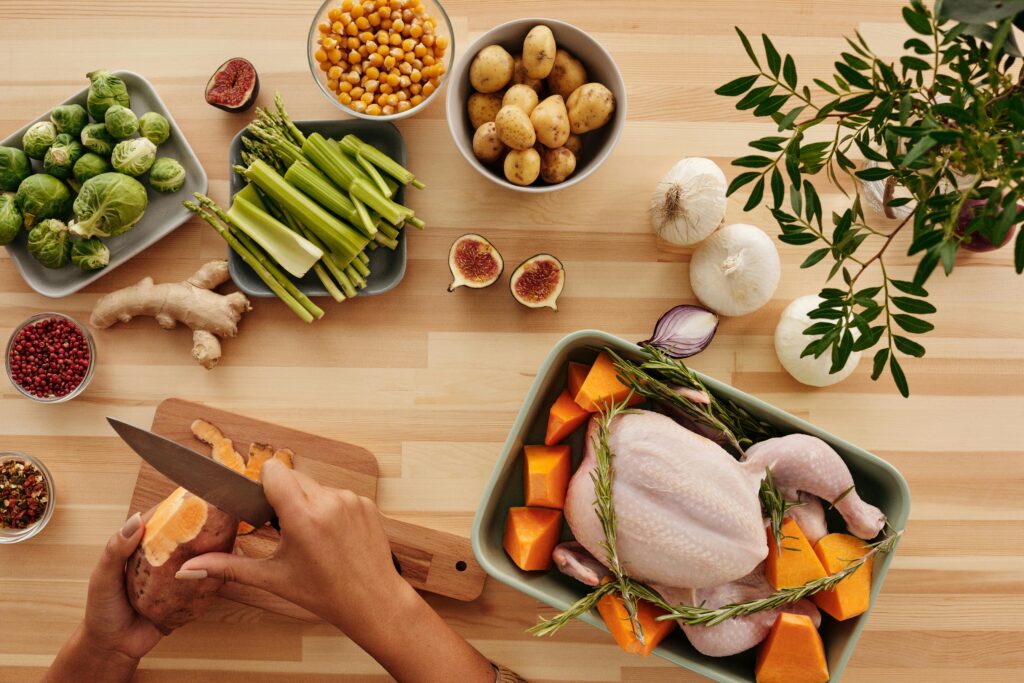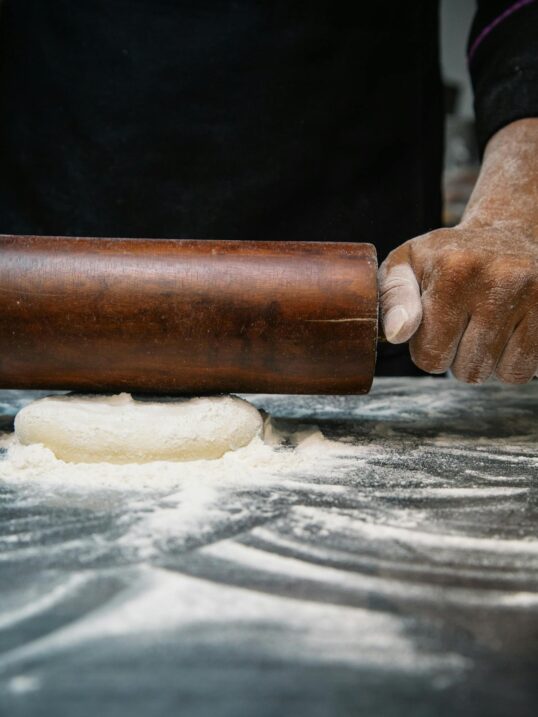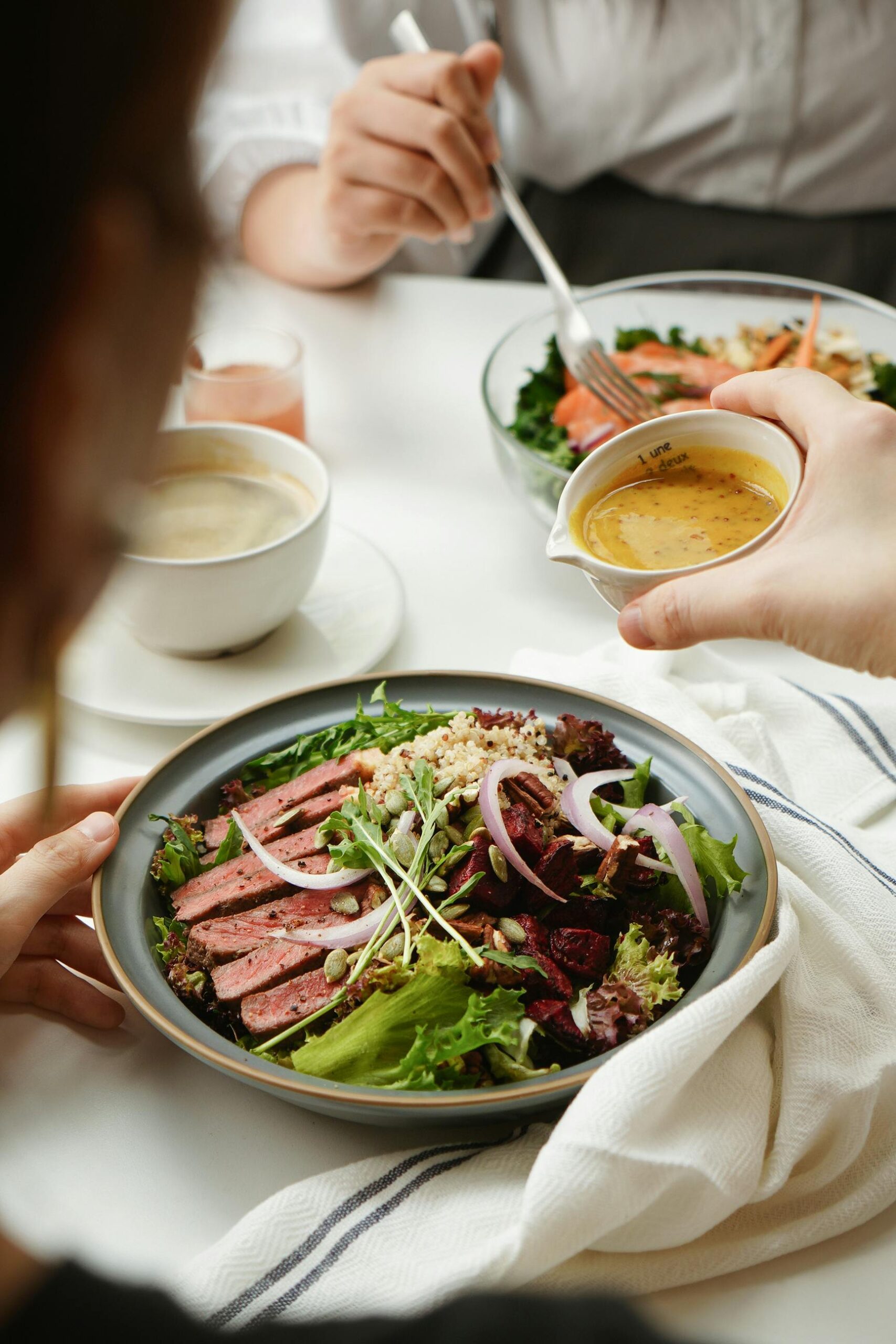Getting chicken from frozen to ready-to-cook status needs a smart approach. While you might be tempted to use the fastest method possible, safety should always come first. The USDA emphasizes the importance of defrosting food safely to prevent harmful bacteria from growing.
Think of thawing chicken like a race where slow and steady often wins. Some methods can get your chicken ready in just 30 minutes, while others might take a couple of hours but offer better safety. Whether you’re working with breasts, thighs, or a whole chicken, knowing the right technique for your situation makes all the difference.
While there’s no magic instant-thaw solution, you can significantly cut down defrosting time while keeping your chicken safe to eat.
Why You Need to Properly Defrost Chicken
The science behind safely thawing chicken isn’t just food prep – it’s food safety 101. According to the USDA, incorrect thawing is one of the main reasons people get sick from food prepared at home.
How Food Safety Works
Think of frozen chicken as hosting sleeping bacteria. These microorganisms aren’t dead – they’re just dormant. Once temperatures rise between 40°F and 140°F (the danger zone), these bacteria wake up and start multiplying fast.
The CDC reports that contaminated poultry makes about 1 million Americans sick yearly, showing just how important proper thawing is.
When chicken thaws unevenly, you might have safe temperatures in some parts while others become bacterial breeding grounds. It’s like having one foot in winter and one in summer – not ideal for food safety.
Common Mistakes to Avoid
The biggest no-no? Leaving chicken out on the counter to thaw. It might seem convenient, but your chicken can become unsafe in just two hours at room temperature. Similarly, using hot water for a quick thaw might seem smart, but it can partially cook the outside while the inside stays frozen, creating perfect conditions for bacteria to thrive.
Watch out for cross-contamination too. Even frozen chicken can spread bacteria, so keep your workspace clean and avoid reusing marinades from raw chicken. Remember – even if you cook the chicken thoroughly later, you can’t undo the damage from unsafe thawing. Some bacterial toxins stick around even after cooking.
Top Methods to Defrost Chicken Quickly and Safely
Let’s dive into three proven ways to thaw chicken that balance speed with safety. Each method has its sweet spot, depending on how much time you have and what tools are available.
The Microwave Method: Quick Results with Caution
Need chicken thawed ASAP? Your microwave can do it in 2-3 minutes per breast, but you’ll need to watch it like a hawk to keep the quality good.
Tips for Even Thawing in the Microwave
- Switch to defrost mode (usually 30-50% power)
- Take off all packaging and use a microwave-safe dish
- Flip and rotate every 30 seconds
- Keep an eye on it to avoid cooking the edges
- Put thin parts in the middle, thick parts near the edge
Safety Precautions
- Skip the original packaging – it’s not microwave-safe
- Use a covered microwave-safe container
- Clean your microwave thoroughly afterward
- Cook right away after thawing
Using a Cold Water Bath: Balancing Speed and Safety
The cold water method takes longer than microwaving but gives you better results. Count on 30 minutes to 2 hours, depending on how much chicken you’re thawing.
Step-by-Step Guide for Cold Water Thawing
- Put chicken in a leak-proof bag and squeeze out the air
- Submerge in cold tap water (keep it under 40°F)
- Switch out the water every half hour
- Plan for about 30 minutes per pound
Frequently Asked Questions
- Warm water instead of cold? Nope – it’s a bacteria risk
- Can I wait to cook it? Better not – cook it soon after thawing
- What if water gets in the bag? Start fresh with a new bag
Defrosting with a Defrosting Tray: Efficient and Simple
These special trays can cut thawing time in half compared to counter thawing, and they’re super simple to use.
Choosing the Right Defrosting Tray
- Go for food-grade aluminum or copper
- Make sure it’s big enough for your needs
- Look for features like drip catchers and non-slip bottoms
- Ridged surfaces help with heat transfer
How it Works: Scientific Explanation
These trays are like heat highways, pulling room temperature warmth into your frozen chicken. The metal (usually aluminum) speeds up thawing while keeping temperatures safe.
For best results:
- Keep room temperature between 68-72°F
- Let chicken touch the tray directly
- Spread pieces in one layer
- Use a flat surface
Alternative Approaches for Defrosting Chicken
While quick methods are handy, let’s look at other options that might work better for your situation, including some controversial approaches and tried-and-true methods.
Hot Water Bath: Assessing Risks and Efficiency
Ever wondered if hot water thawing is okay? While it’s quick, the USDA warns it’s risky. Hot water can create perfect conditions for harmful bacteria to multiply in that danger zone between 40°F and 140°F.
Proper Technique for Hot Water Thawing
If you absolutely must use this method, follow these strict rules:
- Keep water at exactly 140°F
- Use a sealed, leak-proof bag
- Don’t thaw longer than 10-15 minutes
- Check temperature constantly
- Cook immediately after
Health Considerations
Food safety experts don’t recommend hot water thawing because:
- It can cook the outside while the inside stays frozen
- Bacteria grows really fast in warm conditions
- Your chicken’s texture might get weird
- There’s a higher risk of spreading bacteria
Refrigerator Method: For Those Who Plan Ahead
While cold water thawing is safe, the fridge method remains the gold standard. Both the FDA and USDA agree – it’s the safest way to go.
Why It’s the Safest Method
The fridge method wins on safety because:
- Temperature stays below 40°F the whole time
- Bacteria can’t multiply easily
- You’ve got more flexibility on when to cook
- Meat quality stays better
- Less chance of cross-contamination
Time Guidelines for Different Chicken Cuts
Plan ahead with these thawing times:
- Boneless breasts: 12-24 hours
- Bone-in pieces: 24-36 hours
- Whole chicken (3-4 lbs): 36-48 hours
- Whole chicken (4-6 lbs): 48-72 hours
Keep chicken on your fridge’s bottom shelf in a container that’ll catch any drips, and wrap it well to prevent cross-contamination. Yes, it takes planning, but it’s worth it for safety and quality.
Insider’s Insight
Keep these essential tips in mind when thawing chicken:
- Always watch those temperatures
- Keep chicken sealed up tight
- Try to plan ahead when you can
- Keep an eye on quick-thaw methods
- Keep everything clean as you go




Leave a Reply